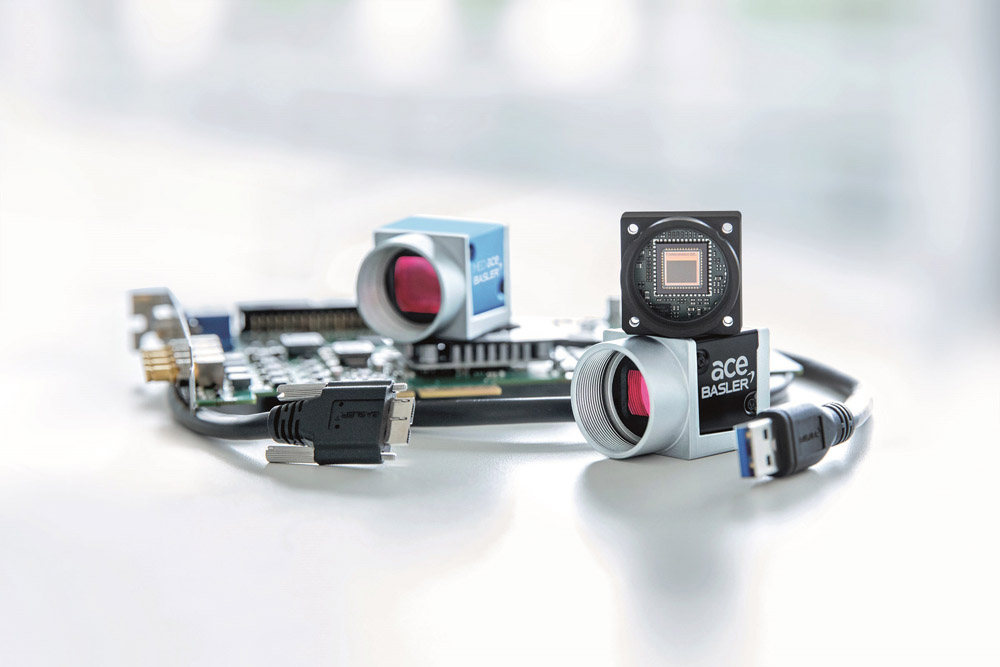
Major energy cost cuts are already accruing from San Diego’s installation of an Internet of Things (IoT)-based connected network of smart streetlights. The savings are among the early bonuses of an ambitious programme aimed at delivering economic, traffic management, social and safety benefits. The city, the second largest in the US state of California, is seeing volume power savings of around US$70,000 a month following the refitting of 4,792 of its poles with power-sparing LED fixtures in place of outdated legacy equipment.
The figure does not include additional savings deriving from the installation of an innovative adaptive control system, which is enabling two additional benefits. First is the capability for daily dimming and switching to take advantage of special rates agreed with local provider San Diego Gas and Electric. Second is the prospect of long-term reductions in the costs of maintenance, arising from a new capability to plan for this proactively.
While the city has yet to carry out a full analysis of the potential for maintenance savings, it anticipates that these will ultimately be in the region of $195,000 a year. These bonuses are among the first fruits of its ambitious Outdoor Lighting Upgrade and Smart Sensor Installation Project, which is being implemented jointly with industry partner Current.
Complementary elements
This began life in 2015 as an internal start-up within technology conglomerate GE, headquartered in Boston, Massachusetts, to focus on integrating LED lighting technology, using networked sensors and dedicated software to increase energy efficiency for both business and local government users. In April 2019, it was acquired by New York-based private equity firm American Industrial Partners (AIP). Current continues to use the GE brand name under a licensing agreement and the city says that its agreement has not changed, following the change in ownership.

The project has two complementary elements. One is the modernisation and interconnection of the city’s streetlighting fittings. The second is to equip its streetlight poles with sensor nodes capable of delivering, via their connectivity, key data that can improve traffic and pedestrian movement and safety, as well as increasing public security.
The nodes harbour an integrated package of hardware branded by Current as CityIQ. It includes a processor and half a terabyte of memory; Bluetooth and Wi-Fi radios; two 1080p cameras equipped for video, still images, and computer vision analytics plus a range of sensors.
These are designed to collect data on street parking, traffic movements and pedestrians (including those on street crossings), and to monitor environmental conditions such as the ambient temperature, humidity and air pressure.
These can, for example, affect the speed at which a pedestrian (or a cyclist) moves about within an area or enters an intersection or other danger point, though the city has yet to explore system performance at this level of detail.
The nodes are also contributing to public security, although this is currently being challenged, on personal privacy and data confidentiality grounds (see below).
Each equipped pole is able to monitor an oval area of roughly 55m by 36m (120ft by 180ft). The system operates between the nodes and the cloud, delivering pre-analysed metadata from the former’s computer vision-equipped ‘edge’ capabilities.
These are inbuilt to overcome issues of network bandwidth limitations, cut costs - and address privacy and security concerns. By enabling the analysis of data as this is being generated, they also decrease latency in the decision-making process. US telecoms titan AT&T is acting as data carrier.
Safety levels
One application identified for early action has involved raising safety levels – not least for vulnerable road users - at San Diego’s 15 most dangerous traffic intersections. Identified with the help of local grassroots lobby Circulate San Diego, these had earlier been treated with a range of physical enhancements, in the form of more visible crosswalks, audible crossing signals and countdown signs.
But continuing safety issues have opened the way to a technological solution. As a result, 13 of the 15 are now covered by the CityIQ nodes, with the remaining two scheduled for upgrading in the near future.
The project is rolling out in two phases. The first ran from autumn 2018 to autumn 2019 and involved the replacement of 4,792 inefficient legacy lighting fixtures with energy-efficient LED ones; and the installation of 3,200 smart sensor nodes on identified poles. The second, due to start in April 2020, with completion scheduled for Spring 2021, will add a further 3,800 light fixtures and 1,000 smart nodes.
Over a 13-year period, the city expects the financial benefits to more than pay for the hardware and cloud-computing services needed to support the operation. A $30 million financing arrangement set up specifically for the purpose aims to spread payments so that savings stay ahead of costs.
As a conscious act of public policy, San Diego is also enabling individuals or organisations that want to access system-generated metadata from the nodes - on, for example, parking, vehicle and pedestrian counts, or environmental conditions - to use a publicly-available application programming interface (API).
Wider potential
The underlying technology now being deployed in San Diego is gaining increasing attention across the US with the basic IoT model for connecting electronic devices becoming more widely adopted. A report from the US Institute of Electrical and Electronics Engineers (IEEE) sees streetlight poles – readily available as existing publicly-owned urban assets – as offering the ideal means of providing continuous observation of, for example, traffic movements and conditions, and potential crime scenes.
This is because they offer the key elements of readily available power connections, ubiquity in urban areas and – not least - elevation. They are set high enough to cover a reasonable area of land at any one time, but low enough to be able to collect a worthwhile range of data on both environmental conditions and the movements of vehicles and people.
Current general manager Austin Ashe estimated that over half the streetlights in the US are owned by utility companies, and the rest by individual city governments. He saw important opportunities emerging for commercial owners that are looking to diversify their revenue streams by taking relevant initiatives in alliance with municipalities. In a recent interview with SmartCitiesWorld, he said: “We are seeing a growing interest in a model whereby the utility company pays for the system’s capital expenditure (CapEx) and the annual operating budget (OpEx); and then monetises these costs through a monthly or annual service fee charged to the city”.
Among other US municipalities that have already shown interest is Atlanta, Georgia, where Current and AT&T have joined forces with regional energy producer Georgia Power. By October 2019, the CityIQ technology was operational in 200 streetlights in five city locations.
Legal issues
San Diego has also become a key US proving ground for establishing the public acceptability of smart streetlights as information gatherers, in the light of personal privacy and data security issues, and delivering assurances to commercial partners and investors. Community groups have been protesting against the nodes’ surveillance capabilities, notably for law enforcement purposes, and have even called for a moratorium on further deployments.
A city spokesperson declined as a matter of policy to comment specifically on pending litigation. But she told ITS International: “This technology gives us tools to make our neighbourhoods safer and smarter; for example, by helping first responders during public emergencies and assisting the police department in solving serious crimes. To date, there have been 60 incidents in which the streetlights have played a critical role in bringing criminals to justice. Many would have been difficult, if not impossible, to solve without this technology.”

She insisted: “Other than for law enforcement, video and image data are not accessible to city staff or members of the public. Private property information is also not visible. The data collected from the nodes is exclusively owned by the city, and any assertion otherwise is wholly inaccurate.”
On his website, city-based criminal defence lawyer James N Dicks cites a 2018 case in which a suspect at risk of being charged with murder during a violent brawl was shown by streetlight video footage to have acted in self-defence. He said: “While there are still questions on how to use these surveillance devices in an ethical manner, they have been useful for both criminal prosecution as well as defence”.
The nodes have no audio capabilities and the city has no plans for their activation, so precluding the recording of private conversations between people passing under them.
Raising standards
One underlying issue being cited in the controversy is the distinction between ‘source’ data, to which a public authority would normally have sole rights and whose confidentiality it would be bound to respect, and ‘processed’ data, which is aggregated and cleaned of any personal information that could identify individuals. A commercial partner could legitimately be given contractual rights to analyse the latter to identify statistical patterns and evaluate the performance of its products and services for its own commercial purposes.
In terms of the rule-making for IoT deployment needed to sustain US public confidence and reassure commercial partners, California is already well ahead of the rest of the US. Due to come into effect in 2020 are two state bills, the Security of Connected Devices Act and the California Consumer Privacy Act (CCPA) - both covering areas in which the US Congress has been slower in making progress at national level.
The former requires manufacturers to equip their devices with ‘reasonable’ security measures, appropriate to their function and the information they collect or transmit. The CCPA gives consumers and users the right to know what personal information of theirs is held, what it’s being used for, and whether it’s being shared or sold on.
It is being seen as reflecting some of the content of the European Union’s established General Data Protection Regulation. Californian laws, by coming into effect in advance of other states’ legislation, could contribute to a de facto US national standard, acknowledging the numbers of IoT and e-commerce businesses that already have customers and partners in the state.
ABOUT THE AUTHOR:
David Crawford is a former editor of ITS International
Let there be streetlight
IoT Analytics’ recently-published 2018-2023 Connected Streetlights Market Report sees huge opportunities for the deployment of the underlying money-saving technology across North America. From a 2018 baseline value of US$1.415 million, it forecasts a 2023 market worth US$13bn, at a compound annual growth rate of 22%,.
It places North America as the second most important adopter region worldwide, after Asia-Pacific and well ahead of Europe.
The figures reflect hardware revenues stemming from sales of lighting fixtures, controllers, communications nodes and gateways, as well as services. They suggest widening opportunities for the use of the resulting networks as the foundations for wider smart city deployments such as San Diego’s.
Florida was the leading US state for connected streetlight deployment in 2017, followed by New York, Oklahoma and California. Heading the list of municipalities is Miami, followed by New York City, Oklahoma City and Montréal in Canada, with major equipment suppliers including Itron, Signify (formerly Philips Lighting) and Telensa. IoT Analytics managing director Knud Lasse Lueth also sees connected streetlights as being “crucial for the roll-out of future 5G networks” in smart cities. The company’s publishing programme for the first half of 2020 includes two further sector documents: a Smart City Flagship Market Report and a Smart City End-User Survey.










